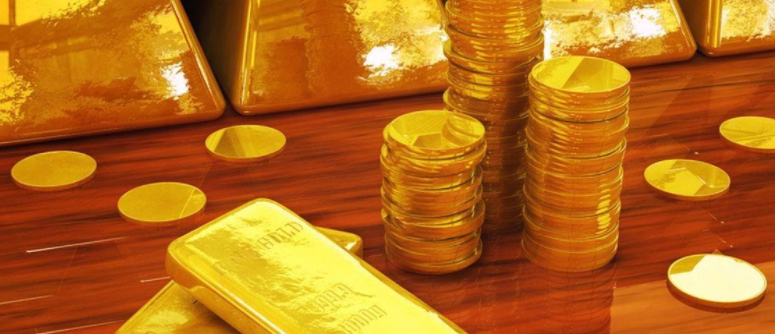Gold doesn’t cease to be an appealing investment opportunity, especially since its price has experienced a substantial increase over the last fifty years. The value of this metal is driven by a wide range of factors, such as government vaults, central bank reserves, economic data, U.S. dollar value, industrial and jewelry demand, mining, uncertainty, ETFs, and others.
Some factors are more influential, whereas others have a minor impact. All these factors have to be considered prior to investing your funds. Nowadays, there is a myriad of precious metal dealers. Make sure you get more information here about the services of U.S.-based precious metal dealers.

Have a look at how each factor influences the price in detail.
Central bank reserves
The primary factor that influences the price of gold is central bank reserves. Central banks are known for holding not just paper currencies but also gold in their reserves. They gradually diversify their monetary reserves by switching from paper currencies to this commodity. Consequently, the gold’s price is on the rise.
Moreover, central banks around the globe have been purchasing larger amounts of this asset since the abandonment of the Gold Standard in 1971 in the U.S. For instance, in 2019, Turkey was the leading buyer of this metal, followed by other European countries, like Russia and Poland, as well as China. Nowadays, a large number of nations in the world own reserves that consist mainly of gold.
Economic data
The economy is another factor driving the price of this asset. U.S. economic data is capable of affecting its value, including wage data, GDP growth, job reports, manufacturing data, etc. Although it isn’t officially confirmed, the stronger the economy, the lower the price.
For example, when there is job growth, low unemployment rates, growth in GDP, and manufacturing expansion, gold prices are pushed down. Click here to learn what GDP is and how it is measured. In the event of powerful economic growth, FOMC can decide to tighten the monetary policy and influence the opportunity cost. This term refers to the abandonment of an almost guaranteed investment gain for taking advantage of the potential of another larger investment gain.
On the other hand, a weaker economy is considered beneficial for the price of gold. When job growth is weaker, unemployment is rising, and GDP growth is subpar, the value of this asset shoots up.

U.S. dollar value
The following factor with a tremendous influence over this asset is the U.S. dollar value. This valuable metal is dollar-denominated, meaning it has an inverse relation with the dollar. When the U.S. dollar is stronger, it controls and keeps the price of gold lower. In contrast, a weak dollar pushes its price up through the increase in demand.
In a nutshell, this asset is often considered to be an inflation hedge. Inflation refers to the rise in the prices of goods and services. When inflation takes place, gold prices experience an increase. Therefore, in times of inflation, investors appreciate having this commodity in their portfolios.
Industrial and jewelry demand
The worldwide industrial and jewelry demand of this valuable metal dictates its price. In recent years, almost half of the demand accounts for jewelry. India and China are unquestionably the leading consumers of this commodity for the purpose of making jewelry.
A small portion of the demand is attributed to its industrial and technology uses. Gold is used in the production of medical devices, such as stents, as well as electronics like GPS. The supply and demand theory affects its price. When the demand for jewelry and electronic goods rises, the cost of this commodity goes up as well. Similar to other products and services, increased demand with limited supply boosts the price of a particular good/service.
Mining
The most important players in the world of gold mining (https://en.wikipedia.org/wiki/Gold_mining) are South Africa, China, Australia, the United States, Peru, and Russia. The overall production on a worldwide level drives the price up or down, once again confirming the supply and demand principle. Global production in 2020 reached almost 3,200 metric tons compared to 2,500 tons a decade ago.
In spite of the increase over the past decade, gold mining production has been almost the same since 2016. This happens due to the fact that easy resources have already been mined, forcing miners to dig deeper in search of high-quality reserves. Approximately there is a total of twenty percent still to be mined.
The challenges imposed on access trigger additional problems, such as exposure of miners to more hazards and a higher environmental impact. In other words, miners require more resources to mine less gold, which pushes the price up.
Uncertainty
Another influential factor affecting the price of this commodity is uncertainty. Political and economic uncertainty have the greatest impact. In times of economic recession, investors turn to gold due to its long-term value. Turbulent times are when investors appreciate the value of this asset the most. When the predicted returns on equities, real estate, and bonds drop, the interest in this asset increases, thus driving the price up.
In addition, the yellow metal provides protection during times of political instability. For instance, terrorist threats, civil wars, political assassinations, and other factors make a contribution to global growth uncertainty. Nevertheless, investors should know that uncertainty cannot be qualified in the same way as the other factors.
ETFs
Exchange-traded funds (ETFs) aren’t exactly significant influencers, but should be mentioned anyways. ETFs lack the power to make market movements. They require minimal investments on the part of investors while providing increased liquidity.
Once gold investment demand changes, the price is likely to be impacted by ETFs’ purchasing and selling activities. When cash inflows for such ETFs experienced a boost in 2016, the purchasing activity was boosted, too, resulting in higher prices. Some ETFs are ownerships of the physical metal, whereas others hold mining company shares.
Technological and Industrial Demand
Beyond jewelry, gold’s use in electronics, renewable energy, and medical devices affects its price.
Tech Sector Growth: Advances in electronics, such as smartphones and semiconductors, increase industrial demand. A surge in green technologies, like solar panels, also supports gold prices.
Substitution Risks: If cheaper alternatives replace gold in industrial applications, demand may decline, pressuring prices downward.
Seasonal and Cultural Factors
Gold demand exhibits seasonal patterns, particularly in cultures where gold is integral to festivals and weddings.
Festive Demand: In India, gold purchases peak during Diwali and the wedding season, driving prices higher.
Off-Season Lulls: Reduced buying activity during non-festive periods can lead to temporary price dips.
Government Regulations and Taxes
Policies affecting gold imports, exports, and taxation influence prices.
Import Duties: Countries like India impose tariffs on gold imports, raising local prices. Conversely, tax cuts or subsidies can stimulate demand.
Mining Regulations: Stricter environmental or labor laws can constrain supply, pushing prices up.
Conclusion
The price of gold is shaped by a multitude of interconnected factors, including supply-demand dynamics, inflation, interest rates, geopolitical risks, central bank policies, and investor behavior. While no single factor dictates gold’s value in isolation, their combined effects create the volatility and long-term trends observed in the market. Investors and analysts must remain vigilant to these influences to navigate the complexities of gold pricing effectively. Understanding these factors provides valuable insights into gold’s role as both a financial asset and a hedge against economic uncertainty.
To Sum up
No factor should be skipped when considering an investment in this precious commodity.
Be thorough.





